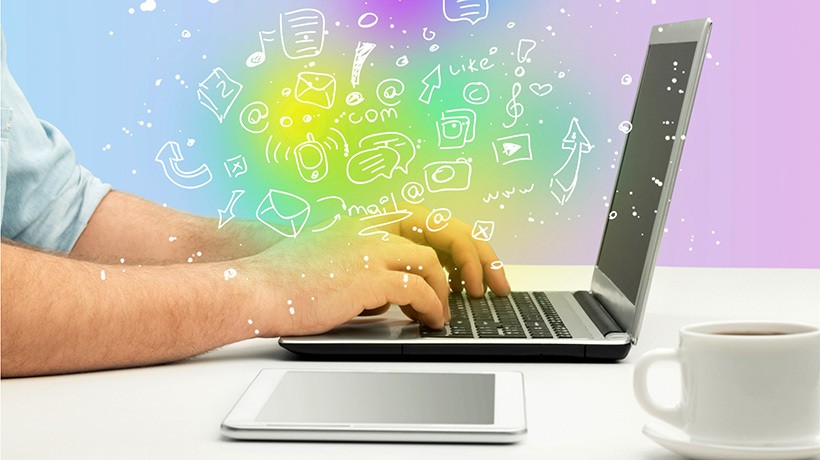How To Use Story Mapping In The eLearning Development Process
Story mapping is an Agile method for developing eLearning courses. It involves describing the user’s journey through the eLearning course, which builds a simple model. The model clearly describes the steps along the way so that you can delve into the motivations, behaviors, and goals of your audience. In short, story mapping keeps the online learner at the center of your eLearning development. It’s a way to create better eLearning experiences that are delivered more rapidly. That’s because the process is iterative, collaborative, and inclusive. If every group within the learning environment is represented in story mapping, the User Experience will be accurately represented as well. Let’s explore why you should use this powerful eLearning development tool and 6 tips to apply it in your next eLearning project.
Why Story Map?
When you create a story map, your job is to describe the user activities, then break those down into user tasks. You’ll end up with a chronological list of all the things an online learner needs to do to reach their learning objectives. This gives you a map that tells the story of the User Experience in different steps. You can use this in several ways:
- To help present a logical layout for your eLearning course
- To allow you to predict the way users will experience the eLearning course
- To help eLearning developers see the learning from a user perspective
- To prioritize the different eLearning activities and tasks
- To create a visual representation of how the eLearning activities and tasks interact in the eLearning course
Once you have worked through the story mapping phase, you have a resource that every member of your eLearning team can understand. This then provides a far more detailed framework than any set of requirements could ever provide. The benefit is that online learners can share in this phase, giving feedback and helping create a buzz about the eLearning course.
Story Mapping: An Example
Imagine you’re building a course for compliance online training. Users might:
- Pause daily work routine to access the online training course
- Access their personalized online training path
- Participate in a virtual simulation or branching scenario
- Finish the mandatory online training course
- Carry on with regular job duties
Your eLearning team would then build tasks under each online training activity to help design your online training course. For example, the activity “Finishes the course” would include the tasks, “Takes an assessment”; “Prints off certification”; “Provides feedback”. You would then define those tasks in more detail and prioritize them to ensure you are using your eLearning development time wisely.
6 Tips To Use Story Mapping Successfully
1. Plot Your Course Of Action Well In Advance
Be aware of project timing, learning objectives, KPIs, audience, and learning culture. This will help keep your eLearning team focused and aligned. It’s also wise to have all your research data on hand. That includes your LMS metrics, survey findings, and the results from your last training need analysis. All this information allows you to focus your efforts and clarify goals so that you get the most from the story mapping process.
2. Prioritize
Build your story map and decide what must be included, then what should be included (if possible). For example, if you need to include an assessment: Must add interactive quiz. Should add progress badge. This will help you decide what is most important. Bear in mind your learning objectives and online learners’ needs.
3. Diversify Your Story Mapping Team
Gather people together to create the story map; it will help engage stakeholders. You will help to create a shared vision, with the eLearning team confident over the quality of the design and content. This collaboration will also help identify gaps or duplications.
4. Use Visual Aids
During story mapping, create a physical visual aid that can be amended. This will help foster a creative environment. Use different colored cards for big stories (activities) and details (tasks). This helps everyone understand what they are working towards and keep the overall user journey in mind. It also helps avoid a fragmented eLearning course design that veers off in different directions and desired outcomes.
5. Periodically Reevaluate Your Location On The Map
Keep the story map displayed throughout the eLearning development process as a prompt, memory aid and discussion tool. In fact, you may want to pin it to the front page of your eLearning Project Management tool so that everyone has a quick reference.
6. Break It Down Into Organic Components
A story map usually consists of eLearning activities, which flow into tasks then stories. Start by clarifying which eLearning activities your online learners must complete in order to achieve the learning objectives. Then determine which tasks are involved in each eLearning activity, followed by the most common behaviors or actions they take to fulfill the requirements. It’s all about thinking organically and stepping into the shoes of your audience. For instance, the eLearning activity is ‘making a sale’. In the story map, the tasks are to ‘identify customer’s needs and match them with the right product’ then ‘access the POS to complete the transaction’. The ‘stories’ section of the map might be broken down into 3 or 4 different paths that each represent an employee position, department, or preference.
As an Agile development process, story mapping is quickly becoming the best tool for designing user-focused software across multiple industries. In the eLearning world, the benefits of putting the online learner at the center of eLearning course design are obvious. Designing an eLearning course based on User Experience is the ultimate way to engage and motivate your online learners. The collaborative nature of the process also helps test assumptions and creates a team dynamic that fosters excellence. Unnecessary eLearning activities will be removed and replaced by meaningful eLearning experiences in this type of environment. Take the time to integrate a story mapping technique into your eLearning development and your eLearning courses will be transformed.
Are you eager to find out more about Agile Development? Read the article AGILE eLearning Course Design: A Step-By-Step Guide For eLearning Professionals to discover the steps to follow for optimizing your corporate eLearning development process using an AGILE approach.









